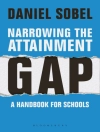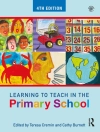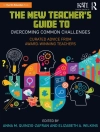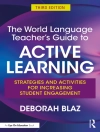Engaged Criminology: An Introduction invites students to learn and think like a criminologist through its applied learning approach. Author Rena C. Zito adopts a conversational tone, prompting students to interrogate inequalities, consider unintended consequences, and envision solutions, all while highlighting the role of systemic inequalities as predictors and outcomes of criminal conduct and punishment. Real-world examples and hands-on activities get students doing criminology rather than just retaining definitions, as well as fostering critical interaction with the most central ideas in contemporary criminology.
This title is accompanied by a complete teaching and learning package in SAGE Vantage, an intuitive learning platform that integrates quality SAGE textbook content with assignable multimedia activities and auto-graded assessments to drive student engagement and ensure accountability. Unparalleled in its ease of use and built for dynamic teaching and learning, Vantage offers customizable LMS integration and best-in-class support.
Table of Content
Chapter 1 What is Criminology?
Chapter 2 Researching Crime
Chapter 3 Common Crime Typologies: Violent, Property, and Public-Order Crimes
Chapter 4 White-Collar Crime, Organized Crime, Cybercrime, Hate Crime, and Terrorism
Chapter 5 Patterns in Crime
Chapter 6 Origins of Criminology
Chapter 7 Contemporary Schools of Thought
Chapter 8 Control Perspectives
Chapter 9 Learning and Subcultural Perspectives
Chapter 10 Strain Perspectives
Chapter 11 Labeling and Defiance
Chapter 12 What is Victimology?
Chapter 13 Theories of Punishment
Chapter 14 Place-Based Approaches to Preventing Crime
About the author
Rena C. Zito is an Associate Professor of Sociology at Elon University, where she also serves as the coordinator of the Criminal Justice Studies program. Her research on families and delinquency, criminological theory, and intimate partner violence appears in the Journal of Interpersonal Violence, Youth & Society, Australian and New Zealand Journal of Criminology, Journal of Youth and Adolescence, Journal of Contemporary Criminal Justice, Sociological Focus, Journal of Family Issues, Journal of Marriage and Family, Sociological Perspectives, and in edited volumes including Preventing Crime and Violence, The Handbook on Race, Ethnicity, Crime, and Justice, and The Handbook of Teaching and Learning in Sociology. In addition, she served as the criminology area editor for the American Sociological Association’s Teaching Resources and Innovations Library in Sociology (TRAILS) for six years and is a contributing author on two active-learning undergraduate textbooks published by SAGE, Sociology in Action and Social Problems in Action.












